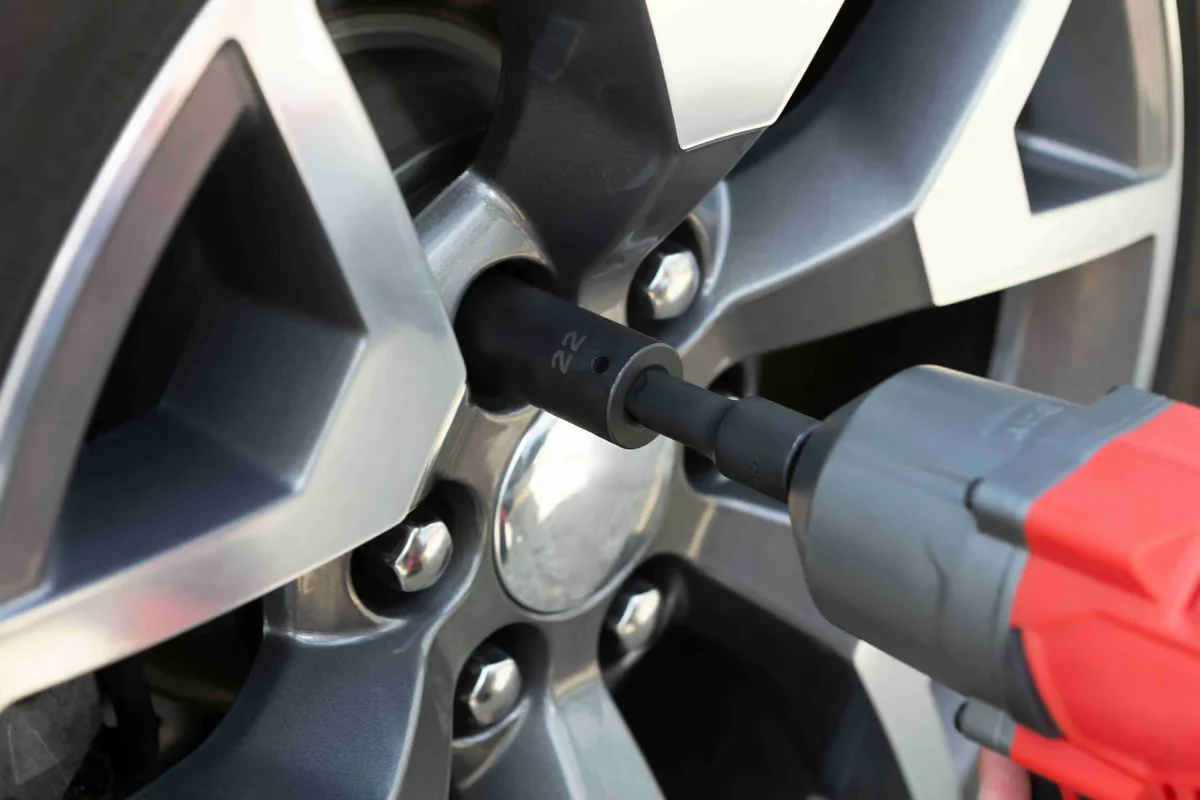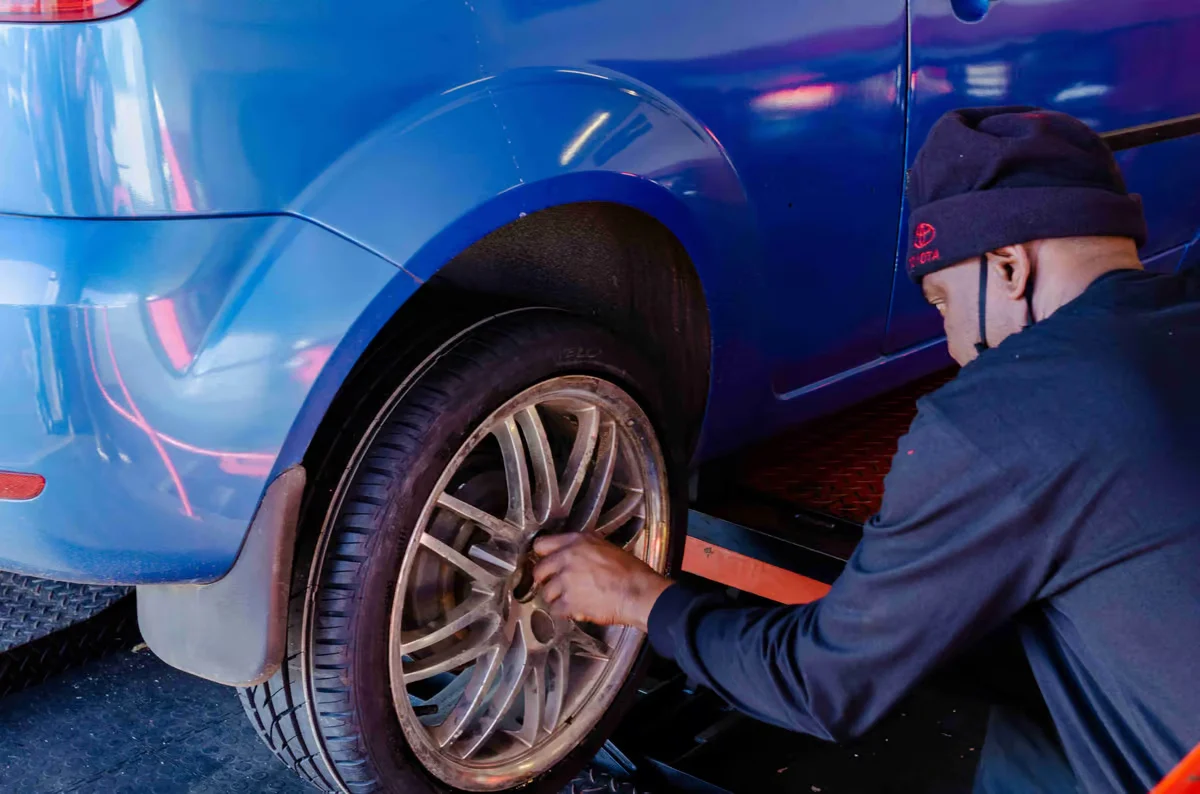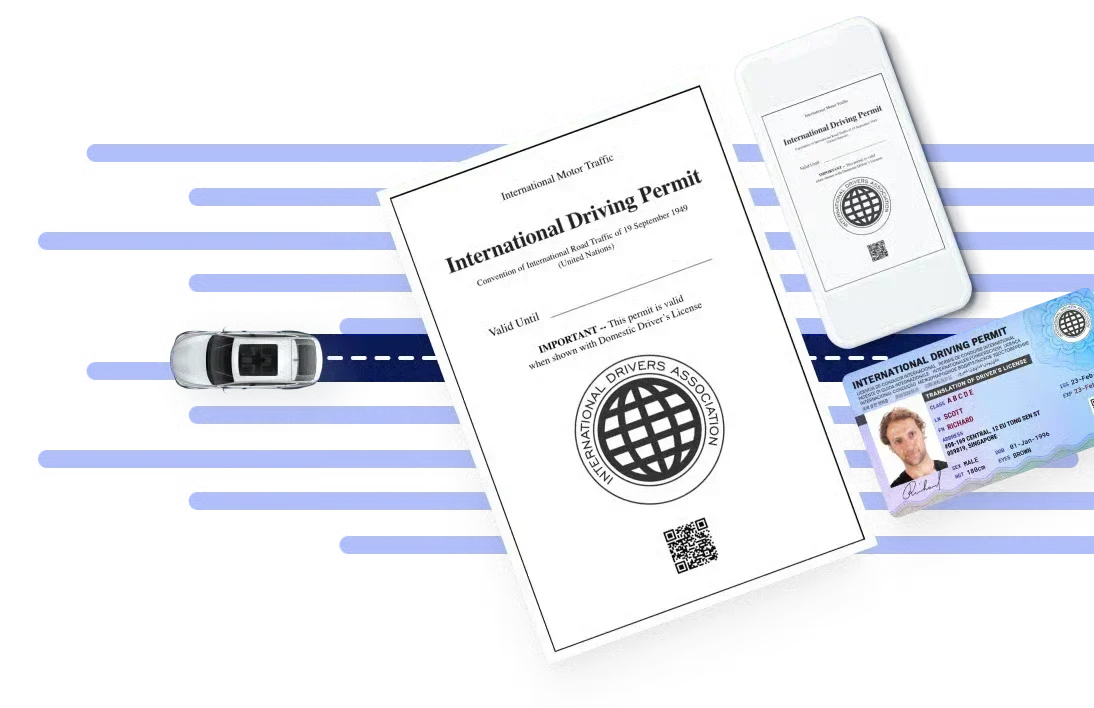Traveling abroad and exploring new countries by car can be an exciting adventure. However, unexpected problems like flat tires can quickly turn your dream vacation into a stressful situation.
As per a recent study, one tire puncture happens every seven seconds, making around 220 million flat tires every year. And the same thing may occur in the middle of your road trip abroad. Don’t worry, though—with the proper knowledge and preparation, you can handle this common issue like a pro.
In this article, we’ll explain everything you need to know about dealing with flat tires when driving overseas.
Preparation
As the saying goes, “An ounce of prevention is worth a pound of cure.” This couldn’t be more true when dealing with flat tires in a foreign country. Let’s look at some essential steps you should take before your trip to ensure you’re ready for any tire-related mishaps.
Learn the basics of changing a tire
Before you even pack your bags, take some time to learn how to change a tire. While 42.2% of drivers are sure they can tackle a flat tire, around 60% admit to having no clue how to handle the situation—you don’t want to be part of the latter.
You might be thinking, “But I’ve never needed to change a tire before!” While that may be true, having this skill can be a real lifesaver when you’re in a foreign country with limited access to help.
Start by watching online tutorials or asking a mechanic friend to show you the ropes—practice in your driveway or a safe parking lot. Pay attention to details like where to place the jack, how to loosen lug nuts, and how to secure the spare tire properly. Remember, practice makes perfect!
Check your rental car’s equipment
Don’t just throw your bags in and drive off when you pick up your rental car. Please take a few minutes to inspect the vehicle and its emergency equipment. Here’s what you should look for:
- Spare tire: Make sure it’s present and properly inflated.
- Jack: Check that it’s in good condition and that you know how to use it.
- Lug wrench: Confirm it’s the right size for the lug nuts on your car.
- Owner’s manual: This can be a valuable resource if you encounter any issues.
If any items are missing or in poor condition, feel free to ask the rental company for replacements. It’s better to sort out these issues before you hit the road.
Consider a tire repair kit
While not a replacement for a spare tire, a tire repair kit can be a useful addition to your car’s emergency equipment. These kits typically include a sealant that can temporarily fix small punctures, allowing you to drive to the nearest repair shop. They’re compact, easy to use, and a lifesaver in certain situations.
Now that we’ve covered preparation, let’s move on to what to do if you have a flat tire in a foreign country.
Compile essential documentation
While preparing for your trip, don’t forget about the necessary paperwork that can help you navigate emergencies, including flat tires:
- Foreign driving license: This document can be crucial when communicating with local authorities or roadside assistance in case of a flat tire or other car troubles. Thankfully, you can secure your IDP online.
- Local emergency numbers: Research and save contact information for local roadside assistance services in your visiting areas.
- Rental car agreement and insurance information: Keep these readily accessible if you need to contact the rental company for assistance with a flat tire.
- Travel insurance documentation: Some policies cover roadside assistance abroad, which could be helpful in case of tire problems.
Having these documents on hand can make dealing with unexpected situations, like flat tires, much smoother in a foreign country.
Now that we’ve covered preparation, let’s move on to what you should do if you have a flat tire in a foreign country.

Source: Photo by Tekton on Unsplash
When Disaster Strikes
Picture this: You’re driving along a scenic road in a country you’ve always dreamed of visiting when suddenly, you hear that dreaded “thump-thump-thump” sound. Your heart sinks as you realize you have a flat tire. Don’t panic! Here’s what you need to do:
Find a safe spot to pull over
Your first priority is safety —both yours and other drivers’. Look for a flat, stable surface away from traffic. If you’re on a highway, try to reach the shoulder or an exit. If you’re in an urban area, aim for a well-lit parking lot or side street.
Once you’ve found a suitable spot, turn on your hazard lights to alert other drivers. If you have them, set up warning triangles or flares behind your vehicle to provide additional visibility.
Assess the situation
Now that you’re safely off the road, it’s time to take a deep breath and assess your options. Ask yourself these questions:
- Do you feel comfortable changing the tire yourself?
- Is it safe to do so in your current location?
- Do you have all the necessary tools and a spare tire in good condition?
Your answers to these questions will help you decide on the best course of action.
Changing the tire
If you decide to change the tire yourself, here’s a quick refresher on the process:
1. Locate the spare tire and tools in your vehicle.
2. Loosen the lug nuts on the flat tire slightly (but haven’t removed them yet).
3. Place the jack under the vehicle at the designated jacking point (consult your manual if unsure).
4. Raise the vehicle until the flat tire is off the ground.
5. Remove the lug nuts and the flat tire.
6. Mount the spare tire and replace the lug nuts by hand-tightening them.
7. Lower the vehicle and use the wrench to tighten the lug nuts fully in a star pattern.
8. Store the flat tire and tools back in the vehicle.
Remember, a spare tire (often called a “donut”) is usually only meant for temporary use. Drive cautiously and get to a tire shop as soon as possible to have your regular tire repaired or replaced.

Source: Photo by Steward Masweneng on Unsplash
Calling for help
Sometimes, changing the tire yourself isn’t the best or safest option. Perhaps you’re uncomfortable with the process, in an unsafe area, or physically unable to change the tire. In these cases, it’s best to call for professional help.
Before your trip, research and save the contact information for local roadside assistance services in the areas you’ll be visiting. Many countries have their version of AAA or other automobile clubs that can help stranded motorists.
Cultural Considerations When Handing A Flat Tire Abroad
When dealing with a flat tire overseas, it’s important to remember that you’re in a different country with its customs and norms. Here are a few things to keep in mind:
Safety first
In some countries, changing a tire by yourself may be unsafe, especially if you’re in an unfamiliar area or it’s late at night. Trust your instincts – if something doesn’t feel right, waiting for professional help is better.
Language barriers
If you don’t speak the local language, consider having a translation app on your phone to help communicate with local mechanics or roadside assistance personnel. Learning a few key phrases related to car troubles in the local language can also be helpful.
Payment methods
Be prepared for different payment expectations. Cash may be preferred over credit cards in some countries, especially for roadside services. It’s a good idea to always have some local currency on hand for emergencies like this.
Gender considerations
In some cultures, it may be unusual or even frowned upon for women to change tires or deal with car issues. While this should not prevent you from handling the situation, if you’re comfortable doing so, be aware that you might receive unsolicited advice or offers of help from locals.
Preventing Flat Tires
While you can’t always prevent flat tires, there are steps you can take to minimize the risk:
Regular tire checks
Get in the habit of visually inspecting your tires each time you get in the car. Look for any obvious damage, bulges, or objects stuck in the tread. Also, check the tire pressure regularly – many modern cars have built-in tire pressure monitoring systems, but it’s still good to know how to check manually.
Avoid road hazards
Pay attention to the road conditions and avoid hazards like potholes, debris, or sharp objects. This is especially important in countries where road maintenance might not be up to the standards you’re used to.
Don’t overload your vehicle
Overloading stresses your tires, increasing the risk of a blowout. Be mindful of your vehicle’s weight limit, especially if you’re packing a lot of luggage for your trip.
Rotate your tires
If you’re renting a car for an extended period or driving your own car overseas, ensure the tires are rotated regularly. This ensures even wear and can help prevent flat tires.
In Conclusion
Dealing with a flat tire while driving overseas can be daunting, but with proper preparation and knowledge, it doesn’t have to ruin your trip. Remember to prepare before your journey by learning basic tire-changing skills and checking your rental car’s equipment. If you get a flat, prioritize safety when pulling over and assessing the situation. Know your options: changing the tire, using a repair kit, or calling for professional help.
Be aware of cultural considerations and local customs, and take steps to prevent flat tires by regularly checking your tires and avoiding road hazards. By following these guidelines, you’ll be well-equipped to handle any tire troubles that come your way.
Frequently Asked Questions (FAQ)
What should I do if I get a flat tire in a country where they drive on the opposite side of the road?
The process is the same, but be extra cautious when pulling over and exiting the vehicle. Always exit on the side away from traffic. It’s best to call for professional assistance if you’re unsure about safety.
Are run-flat tires a good option for overseas travel?
Run-flat tires can be beneficial as they allow you to continue driving for a limited distance after a puncture. However, they’re not available for all vehicles and can be more expensive. Check with your rental company about this option.
What if I get a flat tire in a remote area with no cell phone signal?
Always carry a physical map and know your route. If possible, try to flag down passing vehicles for help. In very remote areas, it is wise to inform someone of your travel plans before setting out.
How do I change a tire on a steep or uneven surface?
If possible, avoid changing tires on steep or uneven surfaces. Ensure the car is in gear (or “Park” for automatics) with the parking brake on if necessary. Use wheel chocks if available. If it’s too risky, wait for professional help.
What’s the typical cost of roadside assistance for a flat tire in foreign countries?
Costs vary widely depending on the country and your location. Research average costs for your destination and budget accordingly. Some travel insurance policies cover these expenses, so check your coverage.
What if my rental car doesn’t have a spare tire?
Some modern cars come with tire inflator kits instead of spares. Familiarize yourself with this equipment before your trip. If your rental doesn’t have either, discuss options with the rental company before accepting the vehicle.
How do I know if driving on my spare tire is safe?
Temporary spares (“donuts”) usually have a maximum speed rating and distance limit printed on the tire. Generally, don’t exceed 50 mph or 50 miles. Full-size spares can be driven normally but should be replaced with a matching tire as soon as possible.
Are there any specific insurance considerations for flat tires when driving overseas?
Check if your travel insurance or credit card benefits cover roadside assistance abroad. Some rental car insurance policies also cover tire damage, but often with exceptions, so read the fine print carefully.







